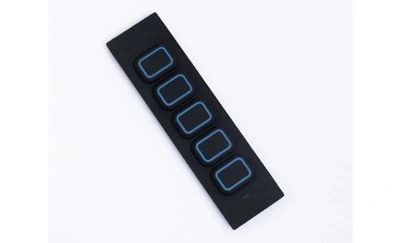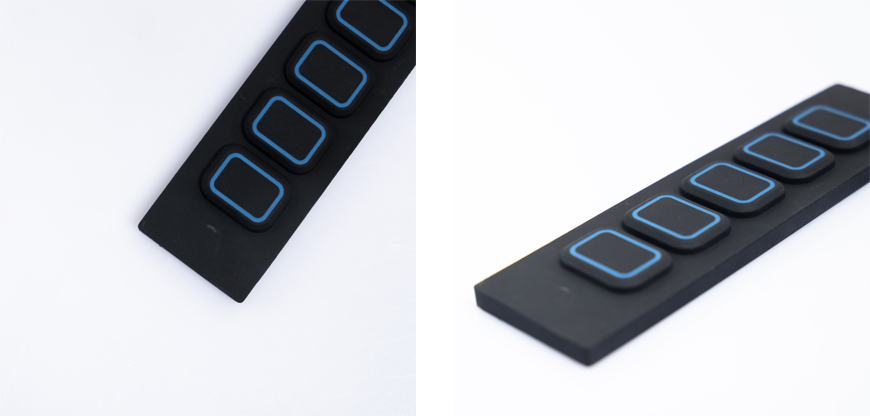
In today's technologically advanced world, membrane switches have become an integral part of various devices and applications. These switches provide a user-friendly interface and are known for their durability and versatility. In this article, we will delve into the world of membrane switches and explore the differences between low, medium, and high membrane switches.

Introduction
What Are Membrane Switches?
The Importance of Membrane Switches
Low Membrane Switches
Characteristics
Applications
Medium Membrane Switches
Features
Use Cases
High Membrane Switches
Attributes
Practical Applications
Advantages of Membrane Switches
Limitations of Membrane Switches
Choosing the Right Membrane Switch
Membrane Switch Manufacturing Process
Maintenance and Care
Future Trends
Conclusion
FAQs
What is the lifespan of a membrane switch?
Can membrane switches be customized?
Are membrane switches resistant to environmental factors?
How do I clean a membrane switch?
Are membrane switches cost-effective?
Membrane switches are thin, flexible electronic components that serve as the interface between a user and a device. They are commonly found in appliances like microwave ovens, remote controls, medical equipment, and industrial machinery. These switches consist of multiple layers, including a flexible membrane, printed circuitry, and a graphic overlay.
Membrane switches are designed to perform specific functions when pressure is applied to their surface. They are often used as buttons or touchpads to activate various functions in electronic devices. Membrane switches offer tactile feedback, making them user-friendly and reliable.
Membrane switches are crucial in industries where reliable user interfaces are needed. They are preferred for their ability to withstand harsh environments, resist moisture, and provide a seamless user experience. Now, let's explore the different types of membrane switches.
Characteristics
Low membrane switches are characterized by their basic design and functionality. They are often single-layered and simple in construction. These switches are cost-effective and suitable for applications where intricate designs or extended durability are not primary concerns.
Applications
Low membrane switches find applications in budget-friendly consumer electronics, such as TV remotes, calculators, and some medical devices. They are ideal for devices where cost is a significant factor, and the switch does not undergo heavy use.
Features
Medium membrane switches offer a balance between cost and performance. They typically consist of multiple layers, including a graphic overlay, spacer layers, and a printed circuit. This design allows for more customization options and improved durability compared to low membrane switches.
Use Cases
Medium membrane switches are commonly used in appliances like microwave ovens, automotive controls, and fitness equipment. They provide a reliable interface with added customization possibilities, making them suitable for a wide range of applications.
Attributes
High membrane switches are engineered for demanding applications where durability, customization, and performance are critical. They feature advanced construction with multiple layers, sealed designs, and robust materials to withstand harsh conditions.
Practical Applications
High membrane switches are extensively used in industries such as medical equipment, aerospace, and industrial automation. They can endure extreme temperatures, exposure to chemicals, and heavy use, making them indispensable in challenging environments.
Cost-effective solutions for user interfaces.
Customizable designs and graphics.
Resistance to moisture and contaminants.
Tactile feedback for improved user experience.
Limited tactile response compared to mechanical switches.
Not suitable for applications requiring very high actuation forces.
Complex designs may increase production costs.
Selecting the appropriate membrane switch depends on the specific requirements of your project. Consider factors like budget, durability, customization, and environmental conditions before making a choice.
The production of membrane switches involves printing conductive traces, applying adhesive layers, and assembling the various components. This process ensures the switch's functionality and durability.
To prolong the life of your membrane switch, clean it regularly with a soft, lint-free cloth and mild detergent. Avoid abrasive cleaners or sharp objects that could damage the overlay.
As technology advances, membrane switches continue to evolve. Expect to see more advanced materials, touch-sensitive interfaces, and integration with smart devices in the future.
In conclusion, membrane switches play a vital role in modern electronics, offering a reliable and cost-effective solution for user interfaces. Understanding the differences between low, medium, and high membrane switches can help you make the right choice for your specific needs.
What is the lifespan of a membrane switch?
Membrane switches can last for millions of actuations, ensuring long-term reliability.
Can membrane switches be customized?
Yes, membrane switches can be customized with various graphics, colors, and designs to meet specific requirements.
Are membrane switches resistant to environmental factors?
Membrane switches can be designed to be resistant to moisture, chemicals, and extreme temperatures, depending on the application.
How do I clean a membrane switch?
Clean a membrane switch by using a soft, lint-free cloth and mild detergent. Avoid abrasive cleaners that may damage the overlay.
Are membrane switches cost-effective?
Yes, membrane switches are cost-effective, especially in applications where durability and customization are important.